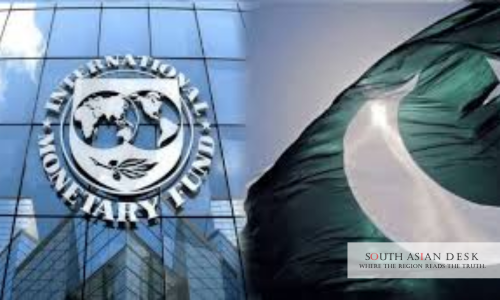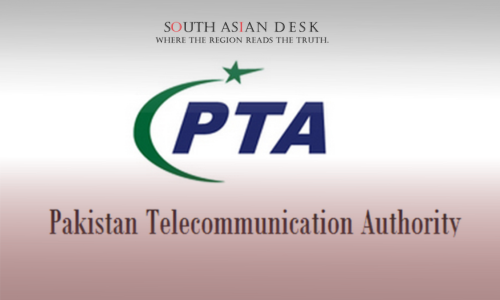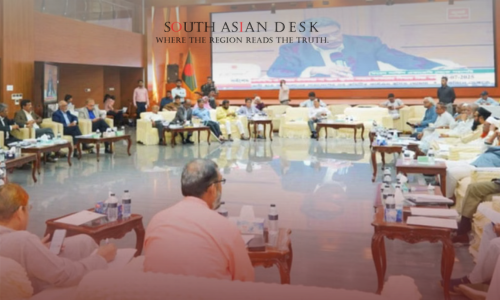An IMF mission’s impending arrival in Islamabad signals potential progress in Pakistan’s economic stabilisation efforts under the ongoing bailout, amid analyst optimism and flood-related hurdles.
Pakistan’s authorities are poised to satisfy all seven quantitative performance criteria (QPCs) under the Pakistan IMF programme during the second semi-annual review, as an International Monetary Fund (IMF) team schedules a visit to Islamabad starting Wednesday, September 25, 2025, to scrutinise performance from March to June 2025 and advance fiscal reforms for macroeconomic stability.
Why It Matters
The Pakistan IMF programme holds broader implications for South Asia, where interconnected economies grapple with climate vulnerabilities and debt pressures. A successful second review could unlock vital funding, enhancing regional financial resilience and curbing spillover risks from Pakistan’s fiscal challenges to neighbours like India and Bangladesh.
Pakistan IMF Targets 2nd Review Amid Recent Flood Disruptions
Analysts at Topline Securities have forecasted that Islamabad will achieve the Pakistan IMF targets 2nd review benchmarks, including net international reserves, swap positions, and primary balance projections for fiscal year 2025 (FY25). This assessment comes as the $7 billion Extended Fund Facility (EFF) enters its pivotal phase, with the review focusing on the first half of 2025’s economic indicators.
The IMF mission, expected to span from September 25 to October 8, 2025, will evaluate compliance with structural reforms and quantitative goals established under the Pakistan IMF programme 2025. According to Topline Securities’ report released on Saturday, September 20, 2025, “Pakistan is likely to meet the IMF’s QPC, including targets related to net international reserves and swap positions,” while noting that “the primary balance numbers for FY25 are also well within the IMF’s projections.”
Recent flash floods, however, pose temporary setbacks. Heavy rains have affected most regions except Balochistan and Azad Kashmir, potentially inflating relief expenditures and straining revenues. Topline cautioned that these events “could temporarily disrupt economic reforms,” though it emphasised Pakistan’s “resilient economy should recover from the impact in the near term.”
State Bank of Pakistan (SBP) Governor Jameel Ahmad, in a recent briefing, affirmed that the central bank stands “ready to present its performance to IMF for the outgoing quarters.” This aligns with the Pakistan IMF targets 2nd review, but he refrained from confirming full achievement of SBP-specific metrics.
Revised Economic Projections Under Pressure
Flood impacts have prompted downward revisions in key forecasts. Topline Securities adjusted FY26 GDP growth to 2.75%-3.25% from 3.5%-4%, with agriculture growth downgraded to 2.6% due to anticipated 15% rice losses and 10% cotton shortfalls. The fiscal deficit for FY26 is now projected at 4.8% of GDP, up from 4.1%, while Federal Board of Revenue (FBR) tax collections are expected to reach PKR 13.6 trillion, reduced from PKR 14.1 trillion.
Despite these adjustments, positive signals persist. The current account deficit is forecasted to stay within 0-0.5% of GDP, import growth at 10% (up from 9%), and remittances rising by 6%. Export growth, however, has been tempered to 1% from 4%. These figures underscore the delicate balance in meeting Pakistan IMF targets 2nd review amid external shocks.
Inflation trends offer further encouragement, having dipped to a historic low of 0.3% in April 2025, enabling the SBP to slash the policy rate by 1,100 basis points since June 2025. Gross reserves reached $10.3 billion by end-April 2025, up from $9.4 billion in August 2024, with projections to hit $13.9 billion by end-June 2025.
Key Reforms Bolstering the Pakistan IMF Programme 2025
The Pakistan IMF programme 2025 emphasises revenue mobilisation and structural adjustments. Provinces have aligned their Agricultural Income Tax (AIT) regimes with federal rules, with implementation from January 2025 and collections commencing in September 2025. The IMF’s first review in May 2025 highlighted “strong” programme execution, approving a $1 billion disbursement and bringing total EFF payouts to $2.1 billion.
Ongoing initiatives include attracting foreign investment in mining and hydrocarbons. The Reko Diq project nears financial close, while renewed US interest in offshore resources signals diversification efforts. The April 2025 Pakistan Mineral Investment Forum drew over 5,000 delegates from more than 50 countries, fostering ties in critical sectors.
FBR faces a September 2025 quarterly target of PKR 3.08 trillion, requiring PKR 1.44 trillion this month alone after early shortfalls of PKR 50 billion, exacerbated by floods and utility receipts. Successful navigation of these Pakistan IMF targets 2nd review will be crucial for tranche approval.
Background
The 37-month EFF, approved in 2024, succeeded a prior Stand-By Arrangement and aims to address chronic imbalances. The first review, concluded on Friday, May 9, 2025, by the IMF Executive Board, praised fiscal consolidation with a primary surplus of 1.8% of GDP in the first half of FY24—exceeding targets. An accompanying Resilience and Sustainability Facility (RSF) arrangement of $1.4 billion supports climate resilience, including water pricing and disaster coordination.
What’s Next for Pakistan IMF Programme 2025
Completion of the second review could greenlight a $1.1 billion tranche, bolstering reserves and easing import pressures. Negotiators must detail AIT implementation and September tax collections during talks. Geopolitical risks, such as oil price volatility from Middle East tensions, loom large, but steady reforms could sustain momentum.
As Pakistan advances through the Pakistan IMF programme 2025, sustained adherence to these Pakistan IMF targets 2nd review will be essential for long-term stability, potentially averting deeper regional economic tremors.
Published in SouthAsianDesk, September 21st, 2025
Follow SouthAsianDesk on X, Instagram, and Facebook for insights on business and current affairs from across South Asia.






